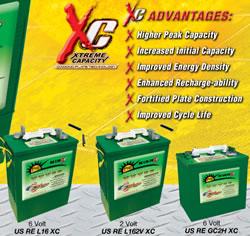Solar Panel Owners: More Consistent Power, Electrical Energy Security, and Hydrogen
Franklin-Thomas configures their generator to integrate with solar panel systems. It may also produce a vast amount of hydrogen.
Electrical power can be shut down for months. The Presidential Debates recently focused on the vulnerability of power grids. The scarcity of fresh water is also considered a looming global crisis. A new product will hit the market soon that will take the chill out of worrying. The Franklin-Thomas Company (FTC) from Central Florida just announced that its unique, patent applied for electrical generator has been configured to work with and enhance the value of solar panels.
The generator was invented by the companys CEO, Joe Shepard. Advanced Energy in Raleigh, NC independently tested the generator and found it was 92.3% efficient.
Shepard found solar panel systems often are under-utilized. When the Sun is available, the solar panel charges a battery bank through the charge controller. When the Suns radiation is not hitting the solar panels, the associated equipment is unused. Some inventors have attached auto-start standby generators to supplement the loss of the Sun. The problem, according to Shepard, is not with the idea; its with the common standby generator being too inefficient for long term use.
Shepard points out current standby generators require the engine to run all the time at a specific RPM, the generator used is only about 55% efficient, and the inefficiency is translated into heat. Heat shortens the life of almost everything. Further, it is common knowledge current standby generators burn fuel quickly.
Carino Energy Renewables Ltd. in the West Indies island of Nevis saw the potential and extended its cooperation with FTC to test Shepards plan to supplement solar panel implementation. Carino Energy has installed and is installing more solar panels that will be part of a large multiplex of energy producing devices.
Jorn Eivik, Carino Energys CEO, hopes to install at least an acre of solar panels on his property. This acre of solar energy is good when the Caribbean Sun is fully available and will provide power. But, when the Sun sinks behind the western horizon or the clouds form, all that would be left are the batteries. According to Eivik, he has proven that Shepards generator will come into play and keep the batteries fully charged. Having run the modified generator for months, Eivik said, "There was no heat and the generator performed perfectly. It is a great solution for Nevis."
Jorn Eivik is also moving in a parallel path that may have even more significant implications both in Nevis and everywhere else. Using his generator, Shepard was able to replicate and improve on the findings he first saw in a paper by Japanese scientists from Hokkaido University - Japanese Journal of Applied Physics, (Vol. 44, No. 1A, 2005, pp. 396-401). In this paper, these scientists used high voltage electrolysis of water to obtain higher levels of hydrogen than the normal one unit of energy in to one unit of hydrogen energy out - as Faradays laws predict. Technically, using electrical energy water can be dissociated into the diatomic molecules of hydrogen (H2) and oxygen (O2).
Shepard said he found his generators, if run into higher resistance, pushed the efficiency numbers and the voltage much higher. Further, because his generators have a unique shape to the AC wave output, the hydrogen is produced in much larger quantities than even the Japanese scientists achieved. In testing, Shepard claims he has seen ratios of hydrogen energy to electrical energy of 35:1 and higher using untouched salt water from the ocean. If those claims are proven accurate, this could mean a major step in providing limitless clean energy.
Shepard and Eivik are planning a facility in Central Florida to exploit the hydrogen work and all these other ideas hidden in Shepards workshop. His work with Palladium may be another path.
Featured Product

